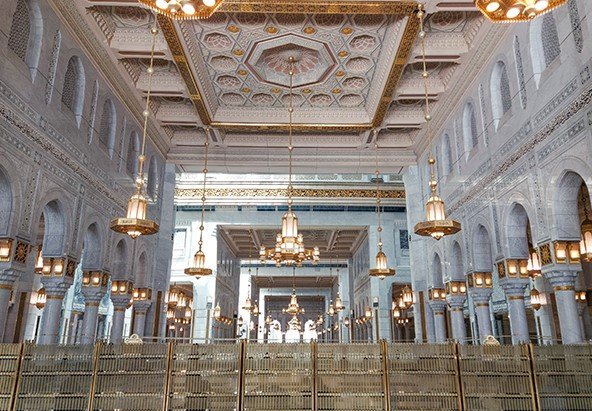Saudi Arabia’s Crown Prince Mohammed bin Salman announced the King Salman Gate project on October 15, 2025, a massive development next to Mecca’s Grand Mosque aimed at boosting space for pilgrims and driving economic growth. This initiative will span 12 million square meters, adding 900,000 indoor and outdoor praying areas while including hotels, shops, and homes to handle the growing number of visitors.
Project Overview and Key Features
The King Salman Gate stands as one of the largest urban projects in Mecca’s history. It focuses on improving access to the Grand Mosque, known as Al-Masjid Al-Haram, which draws millions for Hajj and Umrah each year.
Named after King Salman bin Abdulaziz, the development mixes religious, residential, and commercial spaces. It aims to transform the area into a modern hub that respects Islamic traditions while meeting today’s needs.

Officials say the project will enhance services for pilgrims, making visits smoother and more comfortable. This comes as Saudi Arabia pushes to welcome 30 million foreign worshippers annually by 2030.
Key features include:
- Expanded praying zones to reduce overcrowding during peak times.
- New residential units for long-term stays.
- Hotels and shops to support tourism and local business.
- Cultural facilities to enrich visitor experiences.
Economic Boost and Job Creation
This expansion ties into Saudi Arabia’s Vision 2030 plan, which seeks to diversify the economy beyond oil. By investing in Mecca, the kingdom taps into the lucrative pilgrim market, worth billions in revenue from travel, lodging, and services.
The project is expected to create 300,000 jobs by 2036, covering construction, hospitality, and retail sectors. This will help lower unemployment and build skills among locals.
Recent data shows Hajj and Umrah already contribute over 20 billion dollars to the economy yearly. With relaxed rules on foreign investment in holy cities, more global funds could flow in, speeding up similar developments.
Experts note that projects like this have sparked real estate booms in Mecca, with property values rising by up to 15 percent in recent years. This growth supports small businesses and improves infrastructure.
Link to Broader Expansions in Holy Cities
Saudi Arabia has a track record of major upgrades in Mecca and Madinah. For instance, the King Abdullah Expansion of the Grand Mosque, completed in phases over the past decade, increased capacity to 1.8 million worshippers.
The King Salman Gate builds on that momentum. It follows other initiatives, like the Rua Al-Madinah project near the Prophet’s Mosque, which adds space for 30 million Umrah pilgrims in coming years.
These efforts address the surge in visitors post-pandemic. In 2024, over 13 million performed Umrah, a sharp rise from previous years, straining existing facilities.
| Past Expansions | Area Added (sq m) | Capacity Increase | Completion Year |
|---|---|---|---|
| King Abdullah Expansion (Mecca) | 400,000 | 1.8 million worshippers | 2018 |
| Quba Mosque Expansion (Madinah) | 50,000 | 10 times original | Ongoing |
| Rua Al-Madinah Project | 1.5 million | 30 million pilgrims | 2025+ |
This table highlights how the new project fits into ongoing improvements.
Officials emphasize sustainability, with plans for green spaces and efficient transport to cut congestion.
Impact on Pilgrims and Tourism
Pilgrims will benefit from better facilities, including easier access to the Grand Mosque. The added praying spaces aim to handle crowds during Ramadan and Hajj, when millions gather.
Tourism experts predict this will attract more international visitors, blending faith with modern amenities. Families can stay longer, exploring cultural sites alongside religious duties.
However, some locals worry about rising costs in Mecca due to development. Balancing growth with affordability remains a key challenge.
The project also promotes inclusivity, with features for people with disabilities and improved safety measures.
Challenges and Future Outlook
While ambitious, the King Salman Gate faces hurdles like funding and timelines. No official cost or completion date has been shared, but similar projects have run into billions.
Environmental concerns arise in the desert climate, prompting calls for water-efficient designs. Saudi leaders assure that all plans prioritize eco-friendly practices.
Looking ahead, this could set a model for other holy sites worldwide. As global travel rebounds, Mecca’s upgrades position it as a top destination.
In the end, the project underscores Saudi Arabia’s commitment to modernizing while honoring its religious heritage. Readers, share your thoughts on this development in the comments below, and pass this article along to friends interested in global news.
